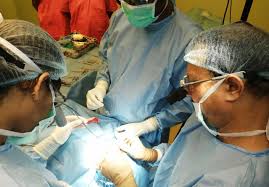
Plastic surgery is a specialized field of surgery that focuses on restoring, reconstructing, or altering the human body to improve appearance, function, or both. It is generally categorized into two main types: reconstructive surgery and cosmetic surgery.
1. Reconstructive Surgery
- Purpose: It aims to restore the function and appearance of body parts that have been affected by trauma, illness, or congenital conditions.
- Common Procedures: These may include:
- Burn Reconstruction: Restoring damaged skin and tissue after burns.
- Cleft Lip and Palate Repair: Correcting deformities present from birth.
- Breast Reconstruction: Often done after a mastectomy (breast cancer surgery).
- Hand Surgery: Treating deformities or injuries to the hands or fingers.
- Reconstructing Facial Injuries: After accidents or surgeries that have caused severe facial trauma.
2. Cosmetic Surgery
- Purpose: The goal is to enhance, alter, or rejuvenate the appearance of the body or face for aesthetic reasons, often driven by personal desire rather than medical need.
- Common Procedures:
- Facelifts: Tightening facial skin to reduce wrinkles and sagging.
- Breast Augmentation: Increasing breast size with implants.
- Rhinoplasty: Reshaping the nose for either aesthetic or functional purposes.
- Liposuction: Removing excess fat from areas like the abdomen, thighs, or arms.
- Tummy Tucks: Removing excess skin and fat from the abdominal area, typically after weight loss or pregnancy.
Benefits:
- Improved Appearance: Aesthetic surgeries can boost self-confidence and improve a person’s overall appearance.
- Restored Function: Reconstructive surgeries can restore the ability to perform specific tasks, such as eating, breathing, or seeing.
- Psychological Impact: Patients often experience a boost in mental well-being when they feel better about their appearance.
Risks and Considerations:
- Complications: Like all surgeries, there are risks, including infection, scarring, blood clots, and anesthesia complications.
- Recovery: Depending on the procedure, the recovery period can vary. Some surgeries require a few days of rest, while others may take weeks or even months.
- Emotional Impact: Not all individuals are satisfied with their results, and in some cases, unrealistic expectations can lead to disappointment.
Trends in Plastic Surgery:
- Minimally Invasive Procedures: Non-surgical options like Botox, dermal fillers, and laser treatments have become popular for individuals who want less risk and quicker recovery.
- Technological Advances: Modern technology, such as 3D imaging, laser surgery, and robot-assisted surgery, has made procedures more precise, safer, and less invasive.
Plastic surgery is a vast field,
and its goals can be as diverse as improving aesthetics to restoring a person’s quality of life. Would you like to explore a specific procedure or any other aspect of it in more detail





Leave a Reply